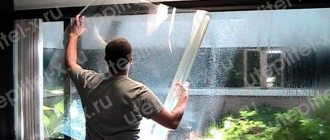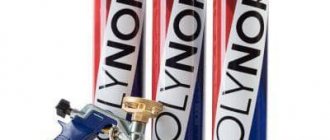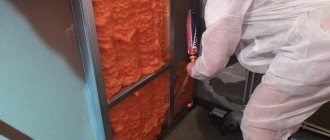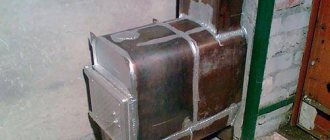You can save on heating in different ways, and this does not always mean creating less comfortable conditions in your house or apartment. Heat-saving film for windows is a polymer material that is applied to glass so that the air temperature in the room is maintained at a given level. You can find such products of different brands on sale, the coating thickness is usually 90-200 microns, the light transmittance remains at 95% or higher. This film has a high ductility index, therefore, in addition to reducing heat loss, it protects PVC windows from mechanical damage to the glass unit.
What is heat-saving film?
Heat-saving (or energy-saving) film is a thin transparent material that consists of several layers.
The film is based on polyethylene terephthalate polymer with a thickness of 80 to 200 microns. A component of the film is a thin metal layer. It is made by sputtering particles of gold, silver, chromium or nickel. The transparency of different types of film varies from 47% to 70%. The price, depending on the constituent materials, starts at 144 rubles and can reach up to 3,000 rubles.
Lifehack
To maximize insulation of a house or apartment, you can use overhead heat shields. They are installed on top of conventional metal-plastic or wooden frames. The surface of such a screen is covered with heat-reflecting film. When installed, it seems to add an additional double-glazed window.
You can cover the glass with energy-saving film and ordinary polyethylene, polypropylene or shrink film. This way you will kill two birds with one stone. At the same time, heat loss due to convection and infrared radiation will be reduced.
What types of heat-saving films do manufacturers offer?
Manufacturers offer two types of heat-insulating films:
- films that are glued to the glass surface;
- films that are fixed to the window opening using double-sided tape.
The first type is the most aesthetic and invisible. In this case, the film creates a “third glass”, that is, a thin air layer appears between the window glass and the film, which protects the room from heat loss. The second type of film is effective in the absence of modern double-glazed windows, as it allows you to close the gaps between the glass and the frame.
Variety
The film differs in the type of pasting. The market offers three varieties of this product.
- Self-adhesive film. This product is easy to stick on any window. The main thing is to prevent the formation of bubbles and jammed areas when working with it. To do this, it is better to use a thick fabric and smooth out defects as necessary.
- Thermal film for window insulation. To secure it you will need thermal tape and a hair dryer. The product is attached with thermal tape, so that there is a gap between the film and the glass. Then all this is heated with a hairdryer and the product fits perfectly on the glass.
- Film without adhesive surface. This product is very easy to use. Attaches to window glass with a simple soap solution. Somewhat reminiscent of car tint. Despite its low cost, it is in no way inferior to the above-mentioned heat-saving products. It also retains heat and has a long service life.
Advice! Experts advise window coverings to be carried out exclusively in autumn or winter.
How does heat-saving film work?
The metal layer of the film reflects infrared rays emanating from heating devices, and the heat remains in the room. This layer is practically invisible to the naked eye, so the lighting of the room does not suffer, especially since in winter you cannot do without additional light sources.
In extreme heat, the film has the opposite effect: it acts as an air conditioner, leaving the room cooler than the air outside. An additional advantage of the heat-insulating film is that it strengthens the glass body, making it more durable and does not allow the glass to shatter into pieces upon a strong impact: even if the glass breaks, it remains attached to the film.
Operating principle
Compared to sun-protection analogues, heat-protective films are more effective and create a barrier to the thermal (infrared) spectrum of solar radiation, eliminating overheating of the apartment. To reflect the thermal energy of the sun, heat-protective materials are used on the windows of private houses, office premises, panoramic windows, and glass roofs.
Solar heat levels are reduced by 70%. The load on the air conditioner is reduced, materials and furniture do not fade, do not lose the brightness of colors, and the view from the window does not suffer - the protection remains transparent.
The glazing area of modern houses, apartments, offices is at least 20%; using athermal window film you can save energy and prevent overheating of the room.
Operating principle of athermal coating
Thanks to the multilayer composite structure, the energy-saving film coating effectively reflects IR rays and does not interfere with the passage of light.
When producing the material, a high-tech method is used - spattering: layers of film are covered with a microscopic ceramic or metal layer.
Where to glue the film - outside or inside: overview video
When is it advisable to install energy-saving films?
With all its positive qualities, thanks to advertising campaigns and the temptation to significantly save on electricity costs spent on heating or air conditioning, heat-reflecting film is not always a panacea. This is due to a number of their features.
If the use of energy-saving film for floor insulation is beyond doubt and is completely justified, then you should use it on windows only after you have weighed the pros and cons. And for this you should know, before you buy a film, which is very expensive, what its physical qualities are and how real the properties of such a “miracle” film declared by the manufacturer are in reality.
To understand the mechanism of action of energy-saving films, let us briefly consider their physical properties.
Thermal reflective film is a transparent polymer material several microns thick, onto which, using “nano” technology, thin layers of rare earth elements (such as gold, silver, platinum, or their oxides, or ceramic components containing such metals) are applied.
The coating process occurs either in a vacuum or in an atmosphere of inert gases (usually argon) by plasma evaporation of the metal, followed by the deposition of its vapor on the base in a layer not exceeding several nanometers.
Several layers are applied to the base in a certain sequence, due to which the reflectivity for certain thermal, light and UV waves changes relative to the transmittance of the window glass. Manufacturers keep the specific content of metals and ceramics used to create the “energy-saving” effect in the strictest confidence.
The only characteristics that you can familiarize yourself with when choosing a particular film are the light transmission coefficient, the heat reflection coefficient and the wavelength range in which this or that film “operates”.
The bulk of solar radiation in the thermal range at the Earth's surface lies in the range of 700-1400 nm. Thus, the “working” range of the energy-saving film should also be within these limits. The second condition that makes it comfortable to use film in a residential area is the light transmission coefficient. If it is high, such a film is practically invisible on the windows and does not affect the overall illumination of the room.
But if the film is tinted in any color, or has a “mirror” coating, then you will have to come to terms with the fact that there will be early twilight and late dawn in your apartment, therefore, you will have to use artificial lighting more and talk about some kind of energy saving there won't be any point.
The third significant factor when deciding to use energy-saving film is the presence of indoor plants in the house.
Energy-saving films not only reflect the flow of thermal energy tending to leave the room, but equally prevent the penetration of UV radiation through windows. And it is vital for the normal functioning of the body (in particular, for the synthesis of D vitamins in the body) and for plant photosynthesis. Lovers of indoor plants will either have to say goodbye to their favorite plants, which will gradually fade away in the absence of UV rays, or immediately after gluing the film, organize artificial lighting for them for 12-14 hours. In this case, there can be no talk of any energy saving.
If you nevertheless decide to stick heat-reflecting film on your windows, then it will be useful for you to know about its positive qualities.
High-quality energy-saving films can reduce heat loss through glass windows in winter by up to 30%.
Thus, a double-glazed plastic window will have the same thermal insulating properties as a triple-glazed one. In the summer, energy-saving film can absorb up to 70% of the thermal energy of the sun's rays and thereby maintain a comfortable temperature in the room without the use of air conditioners. But this is only true for windows oriented in a southerly direction and only for the summer period. In spring and autumn, when the heating is either already turned off or not yet turned on, energy-saving film prevents heat from penetrating into the rooms from outside, and the room becomes cold and damp.
A film glued to glass slightly increases its strength. Some manufacturers claim an increase in the strength characteristics of window glass to 6-8 kg/cm2. Glass becomes more difficult to break. And if this does happen, do not be afraid of the scattering of fragments, which will remain in place, fixed with film.
When using energy-saving film due to the metal content in its composition, it has a good shielding effect. As the manufacturers note, this prevents the possibility of unauthorized removal of information from audio and electromagnetic sources.
For users prone to spy mania, this can be a compelling argument for using film in your apartment.
True, manufacturers modestly keep silent about the fact that the performance of cell phones, which simply stop receiving a signal from the repeater, drops in the same proportion, just like in houses covered with metal siding.
And if, lastly, in order to use a cell phone, you need to go to the window, then in the case of a window covered with energy-saving film, on the contrary, you need to move away from it.
Where to buy the product
Thermal film is a fairly common product for preserving heat in the house. Over the past decade, this product has won the love of many customers. As a rule, the question of where to buy film for window insulation does not arise very often among buyers.
After all, the product can be purchased in an online store at a very affordable price. As well as wholesale and retail warehouses of building materials and hypermarkets of construction goods, they offer many options for thermal film from various manufacturers and different price categories, ranging from economy class to premium class products.
Installation of energy-saving film
Energy-saving films from different manufacturers differ in the method of their installation. They (in most cases) are heat-shrinkable - which, after being fixed to the glass, require treatment with hot air from a hairdryer, or applied to a damp soapy surface, followed by gluing the film sheet to the glass surface as the liquid evaporates. Depending on this, the methods of gluing them to the window are different.
Thermoresistant paper
The shrink film is applied to clean glass, washed with window detergent, thoroughly freed from dust and fibers and degreased with alcohol or gasoline (“Galosh”).
To do this, double-sided tape is glued around the perimeter of the frame on the room side. From a roll of energy-saving film or from a sheet folded in half, a blank is cut out on a horizontal surface, 2 cm on each side larger than the size of the glass on which it will be applied. Then the protective layer of paper is removed from the tape at the top of the window and the top layer of film is glued. You should not pull it too hard.
After this, if you stick the film alone, gradually remove the protective layer of paper from the left and right edges of the glass and, pressing the film from the middle to the edges of the glass, stick it to the freed area of the tape. It is not worth freeing all the tape, since it will be almost impossible to remove the film accidentally stuck to it from the tape and a piece worth 1000-1500 rubles will only have to be thrown away. So, gradually freeing the adhesive tape from the protective paper, the film is glued along the edges of the glass, last of all, the protective paper is removed from the adhesive tape located below, and the film is glued along the entire perimeter of the glass.
After this, use a sharp retractable stationery or construction knife to trim off the excess film that is not stuck to the tape or the tape that is not covered by the film. If this is not done, then dust will stick to it and over time your window will acquire a “mourning” frame.
The final stage of the sticker is treatment with hot air from a hairdryer. Try not to bring the hair dryer close to the surface of the film and do not hold it in one place for a long time. The film must be heated evenly over the entire surface. The completion of gluing will be indicated by a change in the color of the film and its complete transparency.
Wet method of film application
It is also preceded by thorough washing of the window and degreasing it with gasoline or alcohol. The film for gluing must be cut exactly to the size of the glass, without any reserves at the edges. After the film is cut, the window glass must be thoroughly moistened with a soap solution (any uncolored shampoo or detergent).
Moisten the surface of the film and apply it to the surface of the glass, applying the top edge and smoothing it from the center to the edges and stick it over the entire surface of the glass. The film glides well on a damp surface, so you can adjust its position on the glass. After adjustment, use a plastic or rubber window cleaning spatula with an absolutely even edge to squeeze out excess moisture from under the film. This must be done from the center to the edges, from top to bottom.
Particular attention should be paid to expelling air bubbles, since the film will not stick in these places.
For reliability, you can roll the glued film with a small soft rubber roller. As the solution dries, the film will straighten, stretch and stick tightly to the glass.
Summarize
The third window or third glass is a working technology. Not as effective as energy-saving reflective films, but it will help keep the room warm.
There is no need to buy sets and kits, why pay more? You can purchase double-sided tape and shrink film yourself. It will cost 2-3 times less than buying ready-made kits in beautiful packaging.
We hope the article was useful to you. You can ask your questions in the comments. Share with us and our readers your experience of using third glass heat-saving film. Don't forget to share the post with your friends
Do you want to get help from a master, a specialist in this field? Go to the professional search portal. This is a completely free service where you will find a professional who will solve your problem. You do not pay for posting an ad, views, or choosing a contractor. If you are a master of your craft, then register on Pro and receive a flow of clients. Your profit is just one click away!
Pros and cons of the material
Thermal insulation for windows has been used for a sufficient time; positive qualities can be highlighted based on real customer reviews:
- in winter it is possible to save heat by more than 30%;
- in summer, energy consumption is 25% less, thanks to the saving mode of the air conditioning system;
- easy to glue;
- acoustic and electromagnetic channels in the room are limited;
- some models are capable of retaining more than 90% of heat in winter;
- thanks to the delay of ultraviolet radiation, furniture upholstery does not deteriorate;
- increases the efficiency of PVC construction, retains heat, makes watching TV and working on a personal computer comfortable.
Negative sides:
- stretching after some time;
- if you violate the recommendations for gluing, it will come off;
- instability to mechanical damage. You should not work with sharp, cutting objects near the window. If the integrity is violated, the energy-saving properties are leveled.
Minor damage can be repaired with tape. But product performance will deteriorate.
Selection rules
Colored film for facade and interior decoration
Recommendations for selection:
- You need to make sure that the brand of the material really exists.
- The seller must have a quality certificate. If you use a fake, you won’t be able to stick it properly.
- The packaging must be intact - this is an indicator of proper transportation and storage of the goods.
Do-it-yourself insulation of windows with thermal film
Before installing the “Third Glass” film on a plastic window, you should prepare tools such as a stationery knife, scissors and a household hair dryer. These simple tools are available in almost every home. It is easier to install with two people, but you can do the job alone. For detailed video instructions on installing heat-saving film in an apartment, see the end of the article on the website.
Do-it-yourself insulation of plastic windows with thermal film
Instructions for thermal film “Third Glass”
Start insulating roof windows with a small window opening. The surface of the frame should be treated with a degreasing compound and dried. Next, double-sided tape, included in the kit, is attached around the perimeter of the glass unit; The film in the package is folded in half; it should be separated and cut out. Cutting is done in accordance with the size of the window, taking into account the fastening of the thermal film with tape. Check the dimensions of the film by applying it to the window opening being processed; Remove the protective strip from the tape and carefully glue the film to the double-sided tape
Do not pay attention to possible folds, the main thing is that the film is securely attached around the entire perimeter of the frame with double-sided tape; Blow the film with hot air using a construction or household hair dryer; under the influence of temperature, the material will shrink. As a result, the heat-saving film will stretch and become perfectly smooth over the entire area.
Stages of installing heat-saving film on a window
Insulation of plastic windows with heat-saving film
An important advantage of this material is that it increases the strength of the glass unit - the glass will not scatter in different directions into small pieces, which will reduce injuries. The film can be used to insulate wooden and plastic frames; the effect of the material can be compared to installing a double-glazed window. The film reduces the heat transfer of energy from a warm room to a cold one near a double-glazed window.
We will give some more important recommendations based on reviews. When insulating windows for the winter, it is better to install thermal film in October-November. It is recommended to remove it in May, as daylight hours increase. If the film accidentally breaks during installation, do not be upset - the tear can be quickly repaired using ordinary tape.
Advice from the experts
Most experts recommend applying this material to windows for warmth only during the winter season: in March or April it is worth removing the film to reduce heat loss. During the period from October to February inclusive, the difference between the temperature outside and inside the house is most significant, so an additional heating surface is most useful. The rest of the time there is no point in leaving the coating on. If carefully removed, the film can be reused in the future.
During installation and operation, it is necessary to protect the material from damage: it is afraid of the impact of piercing objects, especially when deployed. It is advisable to trim the film with a margin; excess can be removed after application, using, for example, a stationery knife.
It is also important to make sure that the glass does not have external defects that could negatively affect the quality of the anti-fog film after installation.
If it is necessary to remove the material, carefully pull it by the corners, this allows you to remove the coating so that there are no traces of glue left on the glass surfaces.
Thermal insulation of PVC windows with thermal film
PVC windows, which have an additional thermal insulation layer as a heat-saving film, are the most durable. Even if there is a strong blow, the glass will not shatter into small pieces, but will only be deformed. This ensures maximum safety. Insulation of plastic windows is also carried out in some cases.
Although the windows have plastic frames that are additionally insulated with rubber seals, the glass still allows cold air flow into the room. Even owners of double-glazed windows will not be able to obtain ideal thermal insulation. Therefore, in this case, it is most appropriate to use film as a “third glass”.
Installation instructions for thermal film
Instructions:
- Most thermal films have a self-adhesive backing, but some products will stick to the glass due to certain adhesive conditions.
- Before installation, the glass surface must be prepared. Preparation includes thorough window cleaning. After you have washed them, do not forget to dry them. Additionally, use a degreasing solution for treatment.
- After this, the installation procedure for the heat-saving film begins. Apply it carefully; when wrinkles appear, you need to smooth them out using a soft rag. Or you can use a special tool that looks like a car window brush.
- Once you have smoothed out the wrinkles on the surface of the glass, the remaining material must be removed. This can be done using a knife designed for installation.
Advantages
When glued to plastic windows, such a film increases the strength of glass to an average of 8 kilograms per square centimeter.
At the same time, broken glass does not shatter into small fragments, which significantly reduces the risk of injury.
In addition, such a film allows you to save money, since by gluing the film onto a single-chamber double-glazed window, the effectiveness of such a package is equal to that of a double-chamber one.
Additional advantages of heat-saving films include:
- making it difficult for intruders to penetrate;
- protection of interior items from exposure to direct sunlight;
- Blocks 99 percent of ultraviolet rays, which often cause burnout;
- blocking of infrared radiation within 30-99%;
- imparting confidentiality (protects against information leakage through electromagnetic and vibroacoustic channels);
- giving the glass one-way visibility.
A very important point in using films is their correct and competent installation, which should only be done by professionals, since this process is very painstaking. If installed incorrectly, all the benefits of the film are lost.
Negative aspects of using film that you need to know about
Since the film almost completely reflects UV rays, indoor plants, whose growth directly depends on the Sun, begin to suffer because of this. To prevent the plants from dying, they have to be additionally illuminated with photo lamps. That is, this problem is solvable. However, where is the energy saving? The photo lamp must be turned on at least 12 hours a day to ensure normal plant growth and compensate for lost sunlight. Even the most economical lamps will not save you.
What happens to the heat energy if the film is used in spring and autumn, when the heating is already turned off? Since the film does not allow natural solar heat from the street to penetrate, dampness will settle in the apartment and it will be cold.
Few people know about another property of film - they reflect radio waves. That is, radio signals that go to an indoor antenna or mobile phone will be reflected by the coating of the film. And, vice versa: the signal from the mobile phone will be reflected back into the room. Conclusion: cellular communication in buildings where the film is pasted will be very poor.
You should not use film for greenhouses and greenhouses, because plants need the full spectrum of sunlight.
There is no point in gluing the film if the apartment has modern windows with high-quality thick double-glazed windows. But when restoring old windows, it, on the contrary, will serve as a good help. You also need to take into account the fact that the film needs to be changed annually.
Requirements for heat shrink products
The following requirements are imposed on polymer energy-saving products “Third Glass” , in accordance with the current GOST 32563-2013 “Glass with polymer films”:
Mechanical tensile strength of at least 40 mN.- The indicator of heat shrinkage and elasticity must correspond to the characteristics in the quality passport.
- Resistant to temperature changes without the risk of melting.
- Uniformity of composition and thickness.
- Absence of foreign inclusions in the structure.
- Compliance with the actual thermal properties declared by the manufacturer.
- Fire hazard class – not less than G1.
- Environmentally friendly products - when heated, they should not emit substances harmful to human health.
- Service life – from 5 years or more.
According to these regulatory indicators, each manufacturer draws up its own specifications, which are registered with certification bodies. This allows you to test finished products on laboratory benches and obtain an official document indicating the high quality of the product.
Average prices for sticker services
Considering that many installation companies offering the installation of window units, as well as their repair, provide services for installing energy-saving film, fierce competition arises between them.
In this regard, prices for this work are approximately the same in all regions of the Russian Federation and depend on the following indicators :
- glazing area;
- dimensions of one translucent structure;
- the need to join the material;
- removal of the object from the city;
- type of instalation;
- presence of additional wishes from the customer;
- internal pricing policy of the installation organization.
If it is necessary to order the installation of “Third Glass”, it is recommended to take into account the following prices :
- Standard installation in an apartment costs from 50 to 100 rubles. for 1 m2.
- Panoramic window with dimensions of more than 2 x 2 m - from 150 rubles. for 1 m2.
- Stained glass glazing of office centers or business class houses - from 150 - 200 rubles. for 1 m2.
- As a rule, most installation organizations, despite the prices, go to the client’s site if the total amount of the estimate exceeds the minimum threshold - from 2.5 to 5 - 6 thousand rubles.
Important. The final price of the estimate is determined after a detailed calculation, based on the features and content of the technical specifications from the client.
General information
Self-adhesive insulation for windows - an effective but short-lived solution
Today, many methods of thermal insulation are known. The choice of one method depends on the type of window.
This time you will learn how to make ordinary wooden windows and modern double-glazed windows warmer. In addition, I will talk about how to insulate openings outside the house with your own hands using inexpensive polystyrene foam.
Features of using polyurethane foam as insulation
To seal cracks and reduce heat loss, you can use ordinary polyurethane foam. It is extremely easy to use and allows you to obtain the highest quality thermal insulation
You just need to show maximum attention and accuracy during work in order to seal all existing cracks. After the foam has dried, its excess should be cut off with a sharp knife, and the insulation itself should be hidden with something
Polyurethane foam
To mask such thermal insulation, you can use homemade putty. To prepare it, you need to take part of the chalk and 2 times the amount of building plaster. Mix the ingredients, dilute the mixture with water to a semi-liquid state and spread on the foam. Of course, it will not be possible to completely hide traces of insulation, but at least the polyurethane foam will not be so conspicuous.
Thus, to independently insulate windows for the winter, you can use a wide variety of materials. Choose the most suitable and convenient option for you and get started. Good luck with your work and have a warm winter!
Good luck with your work and have a warm winter!











